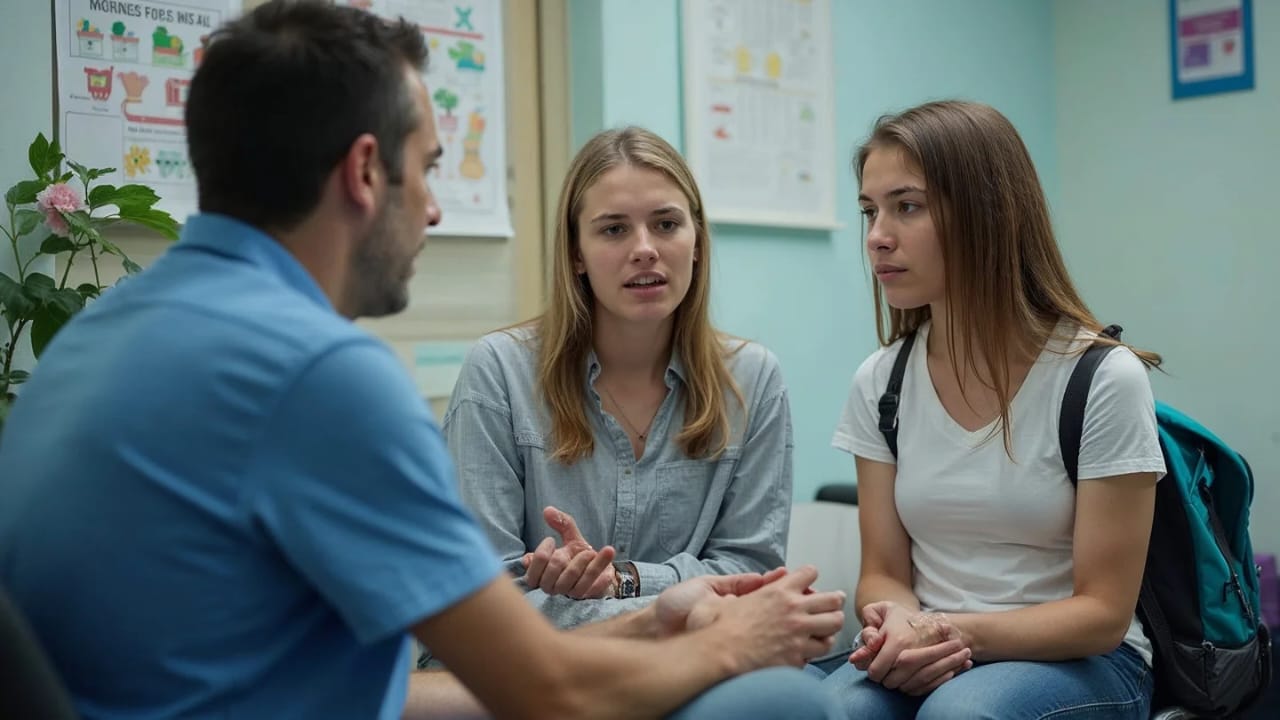A sprained ankle, a head bump during soccer, or a scraped knee after skateboarding these are everyday teen injuries that most parents brush off. But even seemingly minor injuries in adolescents can have long-term consequences if not managed properly.
I’m fine!
I’m ok!
Nothing’s wrong with me!
I can take care of it myself!
Have you ever found out days later that your teen was limping, only to hear, “It’s nothing, I’m fine”?
You’re not alone. Many parents only discover their child’s injury long after it happens, when it’s already gotten worse.
Here’s the thing: teens, especially early teens, often don’t tell parents about minor injuries. Sometimes it’s because they don’t want to miss a game, sometimes they fear being told to “sit out” or “be careful,” and other times they just don’t want to seem weak in front of friends. Unfortunately, what starts as a small sprain or bruise can escalate into a bigger problem if left untreated.
The truth is even minor injuries in growing teens deserve attention. Their bodies are still developing, their bones are softer in key areas like growth plates, and their muscles haven’t yet reached full strength. Add the high-energy sports, skateboarding, and after-school activities common in Torrance, and you’ve got a perfect storm for injuries, any of which flies under the radar.
In this guide, we’ll break down the most common “minor” teen injuries, how to spot red flags your teen might be hiding, and when to seek professional help so small issues don’t turn into lifelong problems.
Growth Spurts and Injury Risk
Teens’ bones grow faster than their muscles and tendons can keep up with, creating tightness and coordination issues. Growth plates, soft areas of developing bone, are particularly prone to injury. Add sports, screen time, and fatigue into the mix, and you’ve got a recipe for falls, strains, and sprains.
According to the CDC, over 8 million teens visit emergency departments annually for injury-related issues, many of which start off as minor problems that go unmanaged.
Common Minor Injuries That Deserve Major Attention
Here are the top minor injuries in teens and how parents can recognize red flags:
Sprains and strains: If swelling or pain persists beyond 48 hours or limits movement, get it checked.
Bruises and bumps: Normal unless recurring in the same area or linked to pain when touched.
Cuts and scrapes: Need proper cleaning and dressing to avoid infection. Look for redness or pus.
Minor burns: First-degree burns from heat styling tools or cooking should heal in a week. Blistering or deep burns need medical care.
Head bumps: Monitor for headache, confusion, sleepiness, or nausea, these may indicate a mild concussion.
When Can You Treat at Home?
Mild sprains, small wounds, and bruises can usually be treated at home using the R.I.C.E. method (Rest, Ice, Compression, Elevation), combined with appropriate over-the-counter pain relief. However, if pain or swelling increases, or if your teen complains of unusual fatigue, dizziness, or restricted motion, it’s best to visit urgent care.
How to Know It’s Time for Urgent Care
You should seek medical attention if:
- A joint appears swollen, unstable, or unusable
- There’s a risk of concussion
- A cut is deep or won’t stop bleeding
- Symptoms worsen instead of improving within 2–3 days
- The same area is injured repeatedly
For Torrance parents, having access to same-day injury care makes all the difference. That’s where Life Saver Urgent Care Torrance steps in, offering immediate evaluations, treatment for sprains, burns, cuts, and mild concussions, and even rehab referrals for recurring injuries.
Recovery: It’s Not Just Physical
An often-overlooked aspect of injury recovery in teens is mental health. Being unable to participate in school sports, social events, or physical activities can trigger frustration, sadness, or anxiety.
As a parent, listen actively, reassure them, and watch for signs of emotional distress. If your child is unusually withdrawn or upset during recovery, consult your care provider. Holistic healing matters, especially in growing teens.
Prevention is Key
Injuries may be inevitable, but you can reduce the risk by encouraging:
- Proper warm-ups before sports
- Use of protective gear
- Adequate sleep and hydration
- Balanced nutrition rich in protein, calcium, and vitamins
- Screen breaks and ergonomic posture to prevent strain injuries
And most importantly, know when to step in early. Minor injuries that are assessed, treated, and monitored correctly are far less likely to become major setbacks.
Keep an eye for more latest news & updates on Daily!



